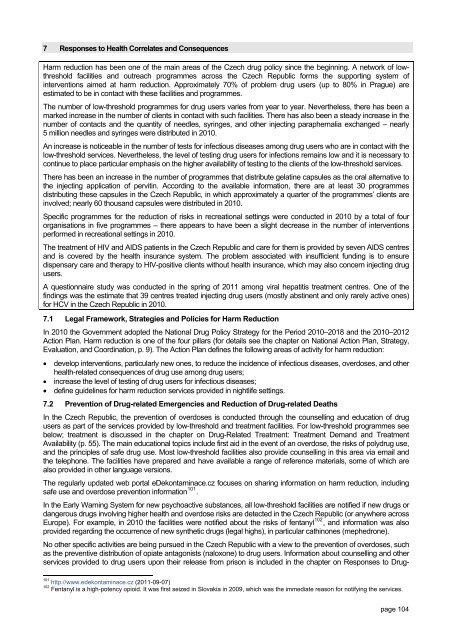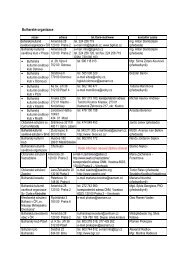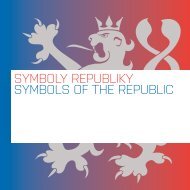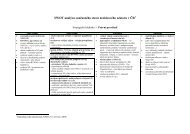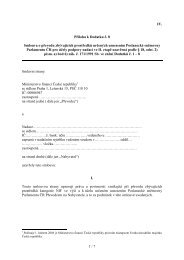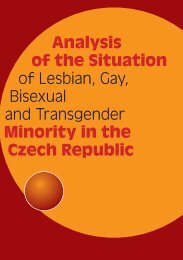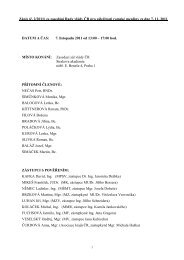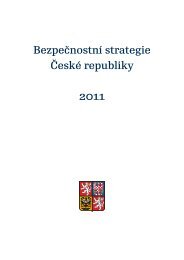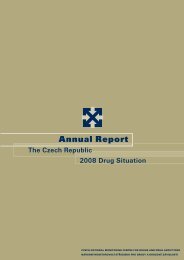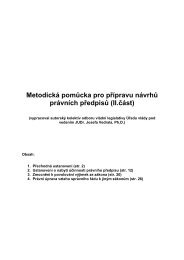The Czech Republic Annual Report 2010 Drug ... - Drogy-info.cz
The Czech Republic Annual Report 2010 Drug ... - Drogy-info.cz
The Czech Republic Annual Report 2010 Drug ... - Drogy-info.cz
You also want an ePaper? Increase the reach of your titles
YUMPU automatically turns print PDFs into web optimized ePapers that Google loves.
7 Responses to Health Correlates and Consequences<br />
Harm reduction has been one of the main areas of the <strong>Czech</strong> drug policy since the beginning. A network of lowthreshold<br />
facilities and outreach programmes across the <strong>Czech</strong> <strong>Republic</strong> forms the supporting system of<br />
interventions aimed at harm reduction. Approximately 70% of problem drug users (up to 80% in Prague) are<br />
estimated to be in contact with these facilities and programmes.<br />
<strong>The</strong> number of low-threshold programmes for drug users varies from year to year. Nevertheless, there has been a<br />
marked increase in the number of clients in contact with such facilities. <strong>The</strong>re has also been a steady increase in the<br />
number of contacts and the quantity of needles, syringes, and other injecting paraphernalia exchanged – nearly<br />
5 million needles and syringes were distributed in <strong>2010</strong>.<br />
An increase is noticeable in the number of tests for infectious diseases among drug users who are in contact with the<br />
low-threshold services. Nevertheless, the level of testing drug users for infections remains low and it is necessary to<br />
continue to place particular emphasis on the higher availability of testing to the clients of the low-threshold services.<br />
<strong>The</strong>re has been an increase in the number of programmes that distribute gelatine capsules as the oral alternative to<br />
the injecting application of pervitin. According to the available <strong>info</strong>rmation, there are at least 30 programmes<br />
distributing these capsules in the <strong>Czech</strong> <strong>Republic</strong>, in which approximately a quarter of the programmes’ clients are<br />
involved; nearly 60 thousand capsules were distributed in <strong>2010</strong>.<br />
Specific programmes for the reduction of risks in recreational settings were conducted in <strong>2010</strong> by a total of four<br />
organisations in five programmes – there appears to have been a slight decrease in the number of interventions<br />
performed in recreational settings in <strong>2010</strong>.<br />
<strong>The</strong> treatment of HIV and AIDS patients in the <strong>Czech</strong> <strong>Republic</strong> and care for them is provided by seven AIDS centres<br />
and is covered by the health insurance system. <strong>The</strong> problem associated with insufficient funding is to ensure<br />
dispensary care and therapy to HIV-positive clients without health insurance, which may also concern injecting drug<br />
users.<br />
A questionnaire study was conducted in the spring of 2011 among viral hepatitis treatment centres. One of the<br />
findings was the estimate that 39 centres treated injecting drug users (mostly abstinent and only rarely active ones)<br />
for HCV in the <strong>Czech</strong> <strong>Republic</strong> in <strong>2010</strong>.<br />
7.1 Legal Framework, Strategies and Policies for Harm Reduction<br />
In <strong>2010</strong> the Government adopted the National <strong>Drug</strong> Policy Strategy for the Period <strong>2010</strong>–2018 and the <strong>2010</strong>–2012<br />
Action Plan. Harm reduction is one of the four pillars (for details see the chapter on National Action Plan, Strategy,<br />
Evaluation, and Coordination, p. 9). <strong>The</strong> Action Plan defines the following areas of activity for harm reduction:<br />
develop interventions, particularly new ones, to reduce the incidence of infectious diseases, overdoses, and other<br />
health-related consequences of drug use among drug users;<br />
increase the level of testing of drug users for infectious diseases;<br />
define guidelines for harm reduction services provided in nightlife settings.<br />
7.2 Prevention of <strong>Drug</strong>-related Emergencies and Reduction of <strong>Drug</strong>-related Deaths<br />
In the <strong>Czech</strong> <strong>Republic</strong>, the prevention of overdoses is conducted through the counselling and education of drug<br />
users as part of the services provided by low-threshold and treatment facilities. For low-threshold programmes see<br />
below; treatment is discussed in the chapter on <strong>Drug</strong>-Related Treatment: Treatment Demand and Treatment<br />
Availability (p. 55). <strong>The</strong> main educational topics include first aid in the event of an overdose, the risks of polydrug use,<br />
and the principles of safe drug use. Most low-threshold facilities also provide counselling in this area via email and<br />
the telephone. <strong>The</strong> facilities have prepared and have available a range of reference materials, some of which are<br />
also provided in other language versions.<br />
<strong>The</strong> regularly updated web portal eDekontaminace.<strong>cz</strong> focuses on sharing <strong>info</strong>rmation on harm reduction, including<br />
safe use and overdose prevention <strong>info</strong>rmation 101 .<br />
In the Early Warning System for new psychoactive substances, all low-threshold facilities are notified if new drugs or<br />
dangerous drugs involving higher health and overdose risks are detected in the <strong>Czech</strong> <strong>Republic</strong> (or anywhere across<br />
Europe). For example, in <strong>2010</strong> the facilities were notified about the risks of fentanyl 102 , and <strong>info</strong>rmation was also<br />
provided regarding the occurrence of new synthetic drugs (legal highs), in particular cathinones (mephedrone).<br />
No other specific activities are being pursued in the <strong>Czech</strong> <strong>Republic</strong> with a view to the prevention of overdoses, such<br />
as the preventive distribution of opiate antagonists (naloxone) to drug users. Information about counselling and other<br />
services provided to drug users upon their release from prison is included in the chapter on Responses to <strong>Drug</strong>-<br />
101<br />
http://www.edekontaminace.<strong>cz</strong> (2011-09-07)<br />
102<br />
Fentanyl is a high-potency opioid. It was first seized in Slovakia in 2009, which was the immediate reason for notifying the services.<br />
page 104


